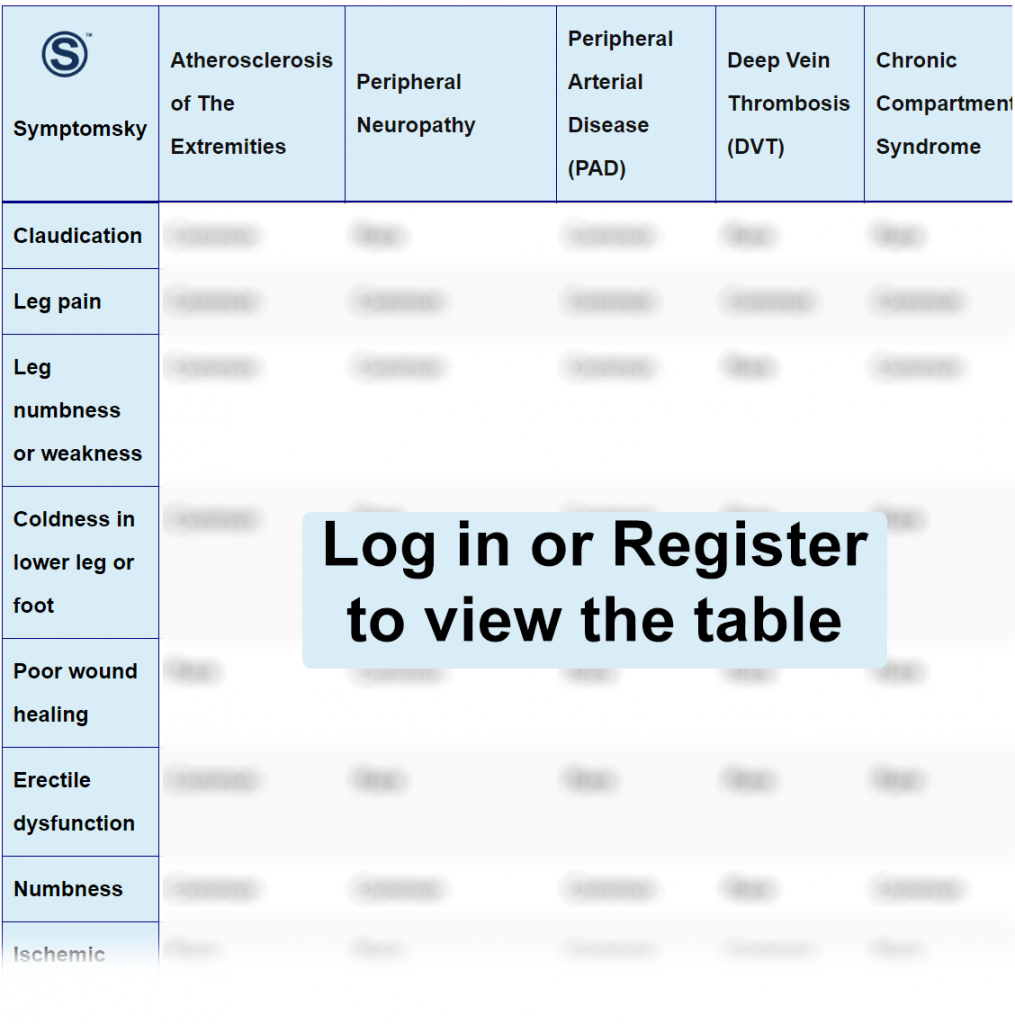Contents
Atherosclerosis Of The Extremities Differential Diagnosis Table:

Atherosclerosis of extremities is a peripheral arterial disease (PAD) causing reduced blood flow to the main peripheral arteries that supply upper and lower extremities. It also causes intermittent claudication (muscle pain due to lack of oxygen). Claudication is triggered by activity and relieved by rest, due to arterial obstruction. PAD is divided into 7 stages ranging from asymptomatic to gangrene or ulceration.
Atherosclerosis of extremities is experienced as muscle pain in thighs, calves, or feet, cold legs, numbness, and muscle pain. Ankle-brachial index, angiography, and duplex ultrasonography are used for diagnosis, along with physical and history examination.
Atherosclerosis of extremities shortens a patient’s life expectancy if left unmanaged. It also has no cure. If lifestyle is not modified, the disease progresses.
How to Distinguish Atherosclerosis of Extremities from Other Diseases
Distinguish Peripheral Neuropathy from Atherosclerosis of Extremities – Diagnosis
- Peripheral Neuropathy shows impaired wound healing, which is absent in atherosclerosis of extremities.
- Claudication is absent in peripheral neuropathy, but crucial sign in atherosclerosis of extremities.
- Peripheral neuropathy involves visible muscle twitching under the skin and muscle shrinking, which are both absent in atherosclerosis of extremities.
“NCV (nerve conduction velocity) and EMG (electromyography) are used for differentiation.”
Distinguish Deep Vein Thrombosis (DVT) from Atherosclerosis of Extremities – Diagnosis
- DVT is associated with swelling and cyanosis of affected tissue, while Atherosclerosis of extremities is not associated with swelling and cyanosis.
- DVT has crucial signs as edema, erythema, tenderness, and fever, which are all absent in atherosclerosis of extremities.
“D-dimer blood test and venous ultrasound are used for differentiation.”
Distinguish Chronic Compartment Syndrome from Atherosclerosis of Extremities – Diagnosis
- Chronic compartment syndrome is only exercise-induced, unlike atherosclerosis of extremities symptoms, which are present without activity and increase with activity.
- Chronic compartment syndrome is associated with bilateral pain, swelling, and tenderness only after exercise, but atherosclerosis of extremities pain is unilateral without tenderness and swelling.
“Compartment pressure testing is the gold standard for differentiation.”
Atherosclerosis of Extremities Complications and Management
Unmanaged atherosclerosis if extremities can lead to ischemia, heart attack, ulceration, gangrene, stroke, amputation, or infection.
Management goals are determined to lower CV risk and improve the ability of walking. Lifestyle modification plays an important role in management such as smoking cessation, controlling diabetes and hypertension, and lowering cholesterol blood levels. Some medications can be taken such as pentoxifylline and cilostazol (both promote vasodilation). Invasive interventions can take place such as stent placement and balloon angioplasty.
